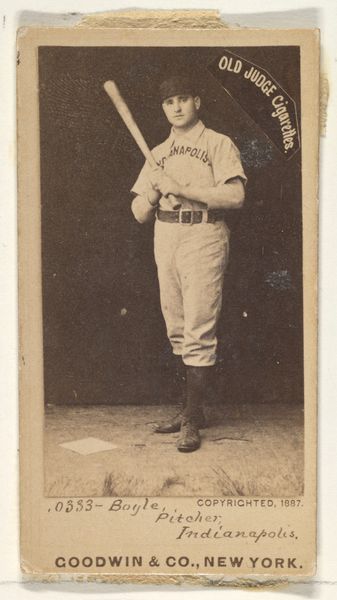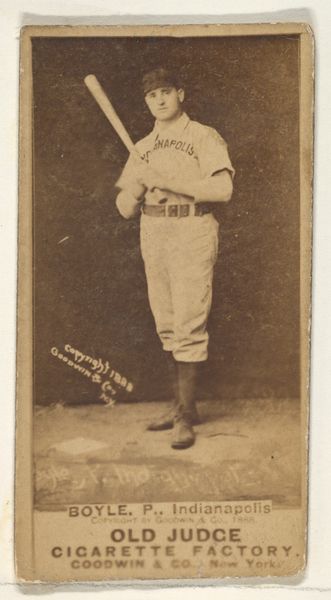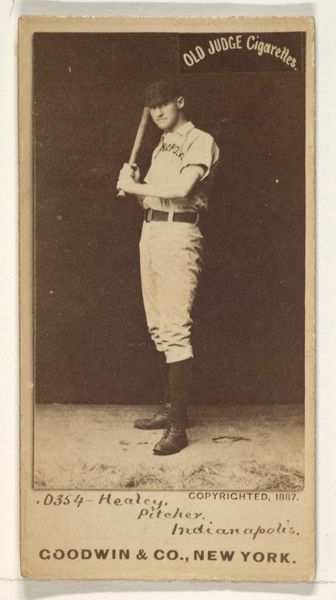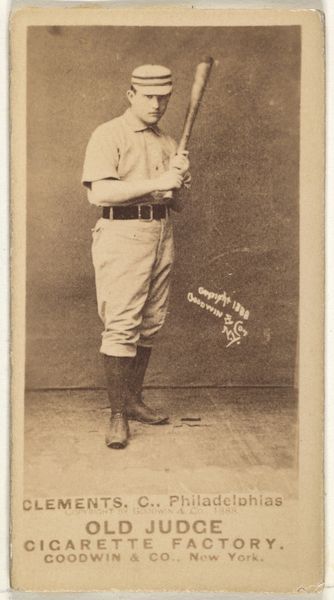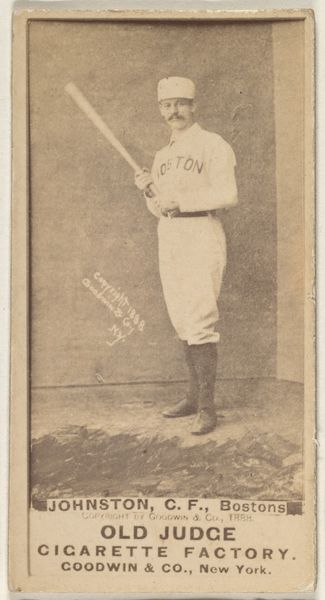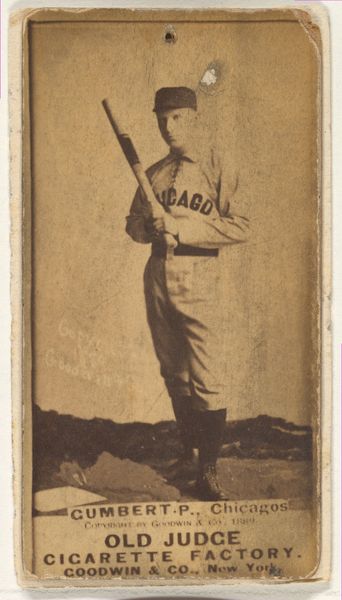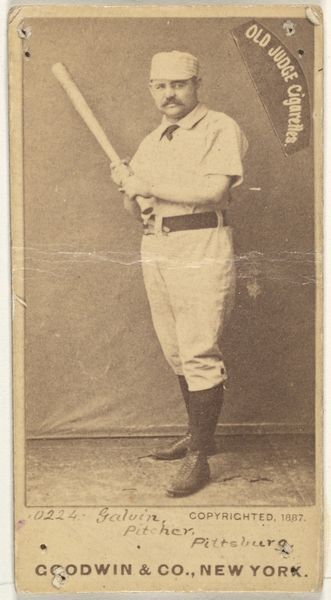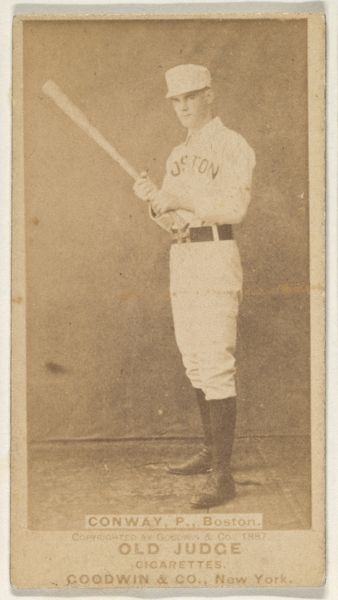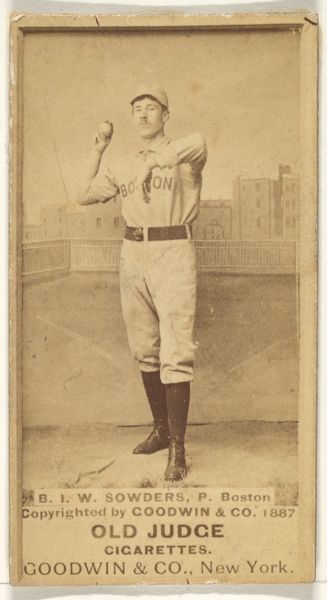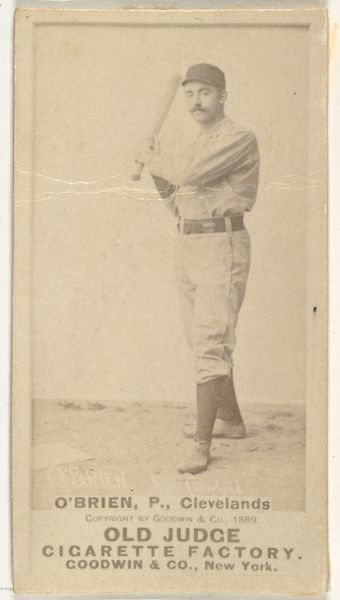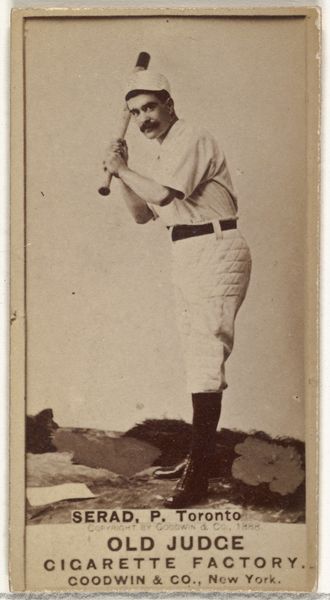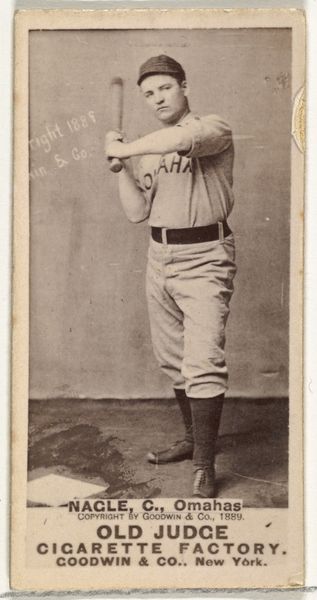
Boyle, Pitcher, Indianapolis, from the Old Judge series (N172) for Old Judge Cigarettes 1887
0:00
0:00
drawing, print, photography, gelatin-silver-print
#
portrait
#
drawing
# print
#
baseball
#
photography
#
gelatin-silver-print
#
watercolour illustration
#
genre-painting
#
athlete
Dimensions: sheet: 2 11/16 x 1 3/8 in. (6.9 x 3.5 cm)
Copyright: Public Domain
Editor: This is "Boyle, Pitcher, Indianapolis" from the Old Judge series for Old Judge Cigarettes, created in 1887 by Goodwin & Company. It's a gelatin silver print, and it's striking how staged it feels. He's clearly posing, but there’s something compelling in its simplicity. What do you see in this piece, considered through a formalist lens? Curator: Immediately, my attention is drawn to the geometric arrangement. Notice how the rigid verticality of Boyle's stance and the bat is countered by the subtle diagonal of the "Old Judge Cigarettes" banner. This creates a visual tension, further amplified by the tonal contrast – the figure stark against the muted backdrop. How do these compositional choices affect your perception? Editor: I guess I see what you mean, in that it feels both very static, almost like a grid, and dynamic because of that banner placement. Is the tension there supposed to hold the viewer’s interest? Curator: Precisely. Consider also the texture: the smooth sheen of the gelatin silver print against the implied texture of his uniform. This interplay between the photographic surface and the subject's clothing adds another layer of formal complexity. Note, as well, how the subtle fading or staining, that slight discoloration near the knee, contributes an element of chance, disrupting the intended perfection. It is, itself, a commentary on time and materiality. Editor: I didn’t even notice that staining at first. It is interesting how such a seemingly small imperfection changes the overall feel. It definitely disrupts the perfection you mentioned. I now see that this is about so much more than just a baseball player! Curator: Indeed. Formal analysis allows us to decode not just what is depicted, but how the artist used the very elements of art – line, shape, tone, texture – to create meaning and elicit response. What started as a straightforward portrait evolves into an intricate dance of form and perception.
Comments
No comments
Be the first to comment and join the conversation on the ultimate creative platform.
